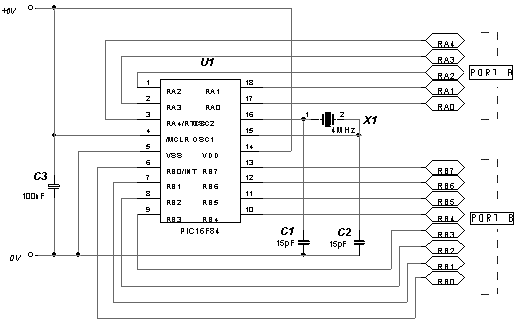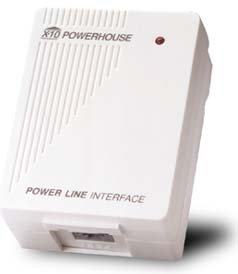An increasing market demand for sophisticated products that interface the digital world of 1s and 0s with the “real-world” has catapulted the need for analog solutions. Consumer devices, from cells phones and music players to blood pressure and glucose meters, are all part analog, and companies like Microchip Technology are more than suited for ensuring their agile development and deployment.– Microcontroller
The announcement of Microchip’s latest family of analog microcontrollers—the GC family—expands upon their portfolio of analog intensive applications. It joins the sophisticated PIC line, tailored for advanced applications like motor control, digital power, and automotive lighting, and the PIC24F line, suited for cost-sensitive applications such as low-cost motor control and LED lighting. By embedding Intelligent Analog, Microchip’s GC family of microcontrollers offers designers reduced development costs, consistent analog performances from one design to the next, and faster market delivery. As Jason Tollefson, Senior Marketing Manager at Microchip, told EEWeb, “The GC [family] is the latest and most sophisticated that we’ve done.”
What sets the GC family apart?
The PIC24F “GC” family integrates several new design enhancements, including a 16-bit Delta Sigma microcontroller and a 10 megasample-per-second (MSPS) analog-to-digital (A/D). “It’s the first time we’ve done both of these microcontrollers on one product,” Jason told us. And, for Microchip’s advanced analog integration, these enhancements on one product, “Is a really high watermark.”
In addition to dual microcontrollers, the GC family also incorporates an “analog signal chain” that encompasses dual mega-sample digital-to-analog converters, dual op-amps, and three comparators, all of which interact with high precision analog-to-digital converters. “All of that is interconnectable within the chip, so that you can create analog circuits within the chip and then present only the pieces to the outside world that are required. that helps us with the noise__ we’re not bringing signals out to the board level, and bringing them back in with the possibility of coupling noise from some external component,” explained Jason.

Figure 2
With the GC family, Microchip has done the work ahead of time. As Jason told EEWeb, “By bringing those components on board, the Microchip design team has now contended with noise and interference with digital blocks and we’ve also contended with communication paths and taking out roadblocks. By bringing those components on, the designer has a chip that has those components embedded and they get consistent analog performances from one design to the next. As they design new applications, they don’t have to worry about if they’re designing this analog on this particular board correctly—that’s all embedded in the microcontroller—they just have to worry about interfacing with their sensors.” The integration of multiple blocks inside one chip allows them to be controlled by software that the designer develops, thereby reducing design costs and ensuring faster time-to-market.
Flexible Features for Designers
The GC family offers several features to ensure designers needed flexibility and end-product quality. These include a programmable block referred to as the Programmable Gain Amplifier (PGA), an interconnected switch, and a Peripheral Pin Select.
The PGA which serves as the input to the 16-bit Sigma Delta, provides developers four levels of programmable gain, up to 16x the original size. This, in turn can be combined with the op-amps to create differential input and gain stage. The interconnected switch enables developers to tie into multiple components and programmatically configure signal paths to different devices. Because each component is under software control, developers can make refinements “on the fly.” This enhancement is achieved by the inclusion of muxes into each of the different blocks. “The idea,” explained Jason, “Is that outputs at certain blocks feed into the inputs of other blocks and vice versa. So, it’s quite flexible in that the muxes have a huge amount of inputs.”
The Peripheral Pin Select serves as a re-mapping feature, allowing developers, using software control, to remap peripherals away from pins to other pins. As Jason articulated, “There’s a certain combination of analog and digital peripherals that a customer needs and [the developer] can manipulate where these digital peripherals come out to make use of them to sort of preserve the analog and also allow them to make the most use of their design.”
Features for Rich Applications
The GC Family is the second device in the PIC24 family to include a Direct Memory Access controller (DMA). The DMA serves to facilitate the transfer of data between the CPU and the peripherals without CPU assistance and in doing so, saves power. It also allows the device, “To do two things as once,” said Jason, “We can have our core doing a function and updating the LCD with new information, while in the background, our DMA can be streaming information from [the] 50 channels of A to D into a RAM space.”
Another noteworthy attribute of the GC Family is the ability tailor the presentation of rich information to the end user. If the designer chooses to implement a screen for example, they can show icons that can be animated, they can also show information in text form, or even simple graphic form. With the rich information display, explained Jason, “You can present specific procedures to a user rather than a blinking icon and a number. You can tell them how to apply the sample, when to apply the sample, and if they want to upload the data or results of the information to a smart phone or to a PC, it can walk them through that process as well. With an aging community of diabetic folks, that might be more important to be able to walk them through the process so that there’s not as much jeopardy of them doing the process incorrectly and the data not being valid.”
These features, coupled with USB and LCD touch sensing interfacing, along with Microchip’s XLPtechnology to ensure extended battery life, make the GC family an ideal choice for medical and industrial applications. As Jason indicated, “[Microchip] looked a lot at the medical space—that’s one of our key targets with the family—so things like blood pressure meters, glucose meters, and so on. We also looked at industrial applications, so things like lab instrumentation, environmental quality testers, data loggers, production tracks where they need high-speed sensors, and even things like mining where the miners wear portable gas sensors to make sure they’re not being exposed to dangerous chemicals.”

Figure 3
In order to service the spectrum of designers that will be developing these applications, Microchip included high-speed 12-bit and 16-bit A/D converters. Whereas, in the past developers were limited to using only one A/D converter, providing both expands the capabilities of the end application. The high-speed 12-bit A/D converter, for example could be used to quickly analyze an area of interest, after which time, the 16-bit A/D convertor could be used to collect very fine detail on a subset of data.
Related:
Development Kit
To help designers get started, Microchip has developed the PIC24F Starter Kit for Intelligent Analog. The analog header that accompanies the kit can plug directly into the board; Sensors can also be connected to the board itself, which can in turn interface with the analog header. As Jason explained, “We designed the board to be very clean; [the] analog signals are routed away from digital so you’ll get the best representation of the analog you need to conceive of coming out of the header.”
To make things interesting for designers who get the developer kit and showcase the capabilities of the LCD display, Microchip has included onboard sensors with associated demos and menus. These include a microphone demo, a headphone demo, and a light sensor demo. There is also a demo revolving around the A/D convertors themselves. To assist with the programming, Microchip has even thrown in a built-in programmable debugger.
PC for lab software, the board itself, and a USB cable is everything a designer needs to get started on developing a prototype for an end application. With the release of the GC Family, concluded Jason, “We are trying to anticipate all the things that our designers [of] portable applications would want to do and put that on our board in terms of hardware and software so that they can leverage that to the maximum extent.”



















